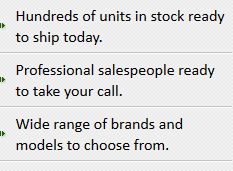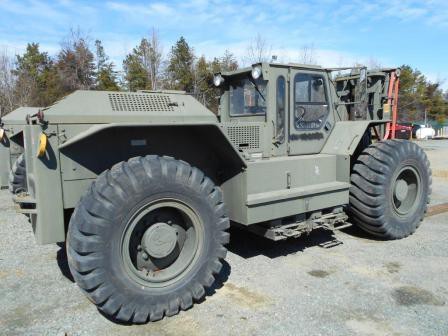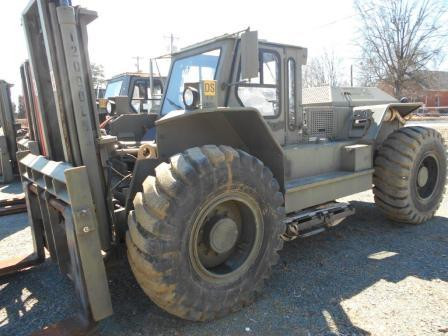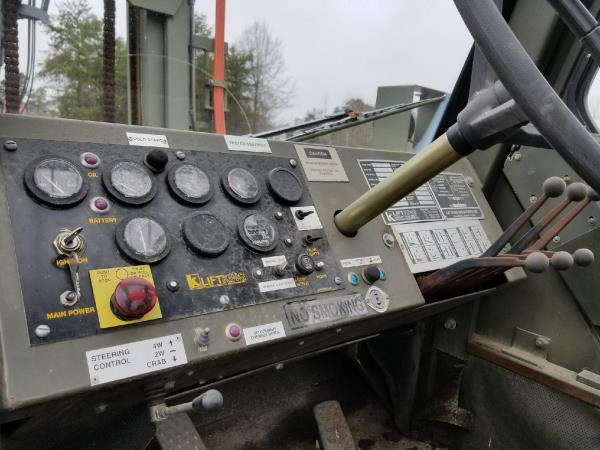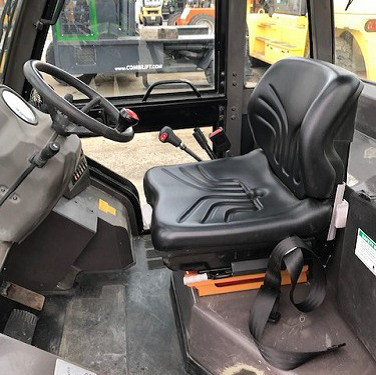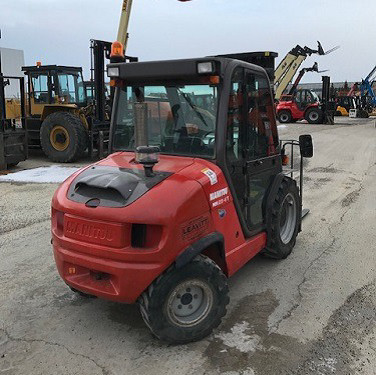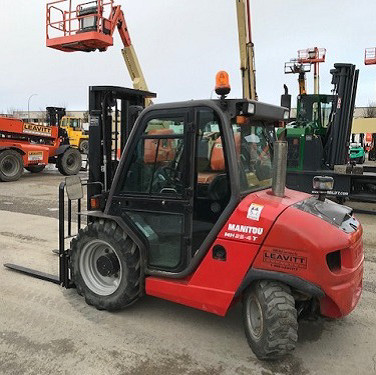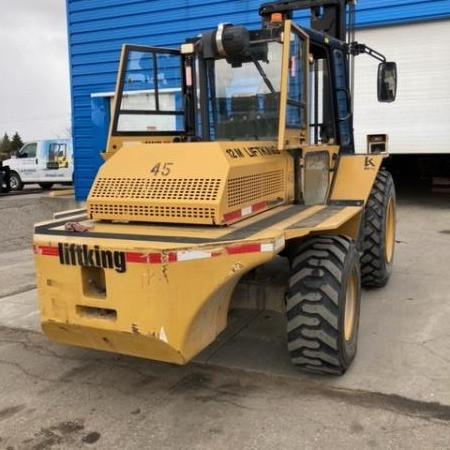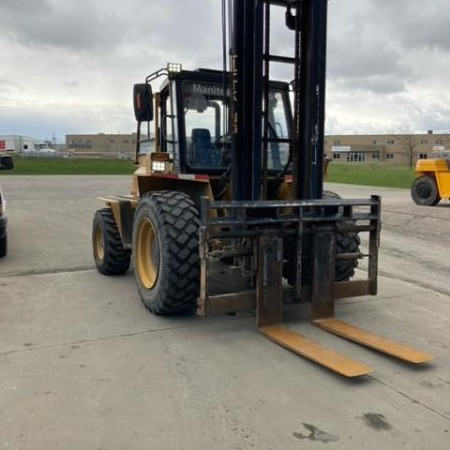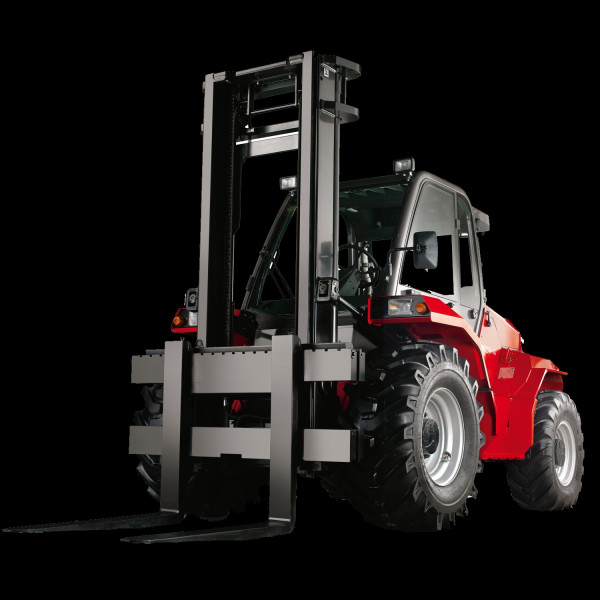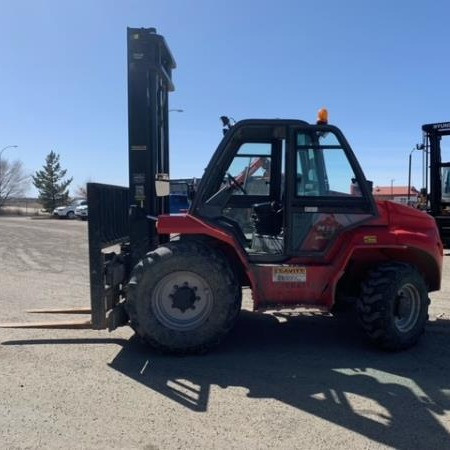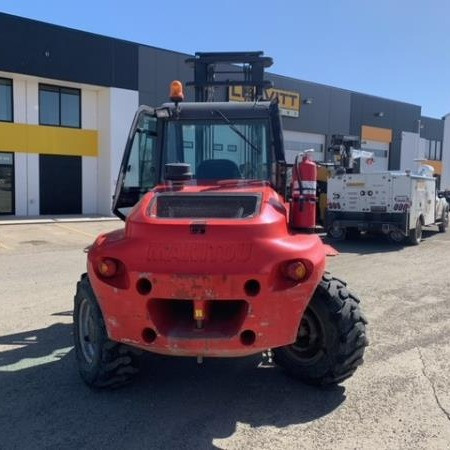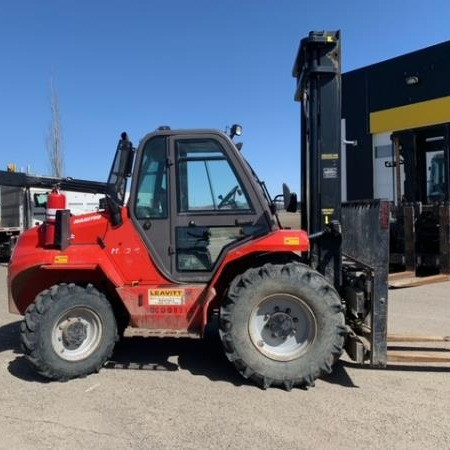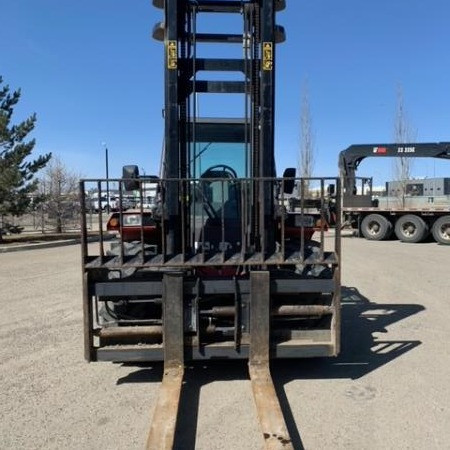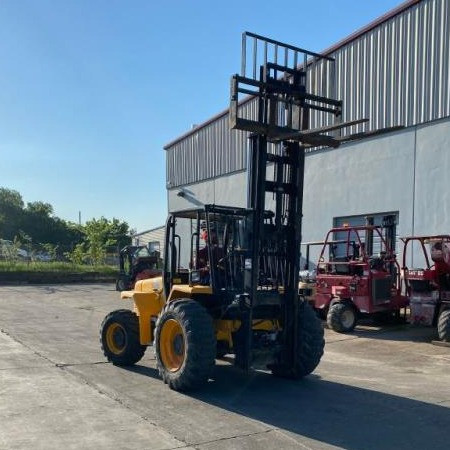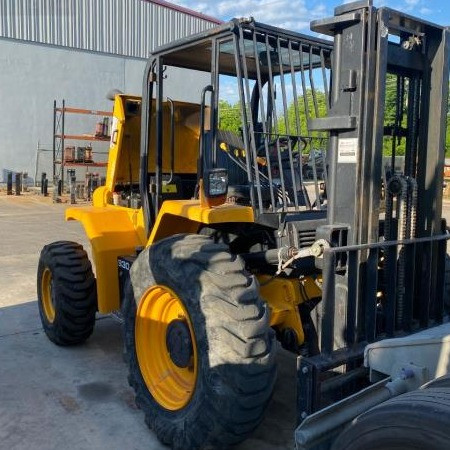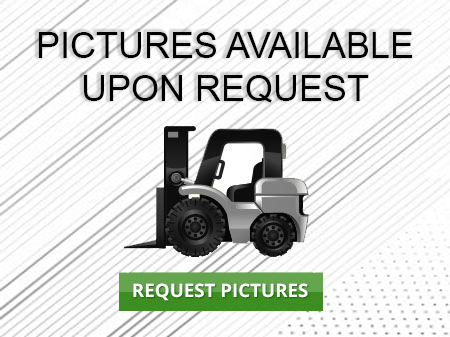Rough Terrain Forklift Salem
Used Rough Terrain Forklift Salem - Forklift trucks utilize two forks to transport pallets and load and unload cargo. The rough terrain forklift and the industrial forklift are the two main types of forklift trucks.
Industrial forklifts are mainly used in loading docks and warehouse applications with smooth and level surfaces. By contrast, the second category of forklifts, rough terrain forklifts, are commonly used to run on uneven and rocky surfaces. Due to size, tires, and weight capacity, a rough terrain lift is primarily used outdoors, often at construction sites. The main difference between rough terrain and industrial forklifts is the cushion tires that are on industrial forklift models. Rough terrain models rely on pneumatic tires, a kind of tractor tire known for better floatation and traction abilities. Industrial forklifts are commonly powered by internal combustion engines although a fuel cell or battery electrical source may be used. Internal combustion engines are mainly used by rough terrain units.
Types of Class 7 Rough Terrain Forklift Trucks
The three types of Class 7 Rough Terrain Forklift Trucks include the rotating telehandler forklifts, telehandler forklifts and straight mast forklifts.
Rough terrain forklifts function well in treacherous locations that are often found in construction sites and military settings. The rough terrain models travel and perform well in difficult locations. Additional consideration needs to be given for rough terrain forklift options while raising loads in difficult conditions in order to stay safe from tipping over. The machine needs to remain in a stable position prior to lowering, lifting or moving any items. Adequate stability and proper lifting techniques need to be implemented to keep the forklift stable on the ground.
Straight Mast Forklifts
Designed to facilitate safe transport along difficult terrain such as demolition sites and construction locations, straight mast forklifts can complete the job safely and efficiently. Better accessibility and maneuverability are offered by these units thanks to their pneumatic cushion tires. Pneumatic tires allow the machine to successfully traverse difficult terrain. It is common for straight mast forklifts to come with 2-wheel or 4-wheel drive. Even though these machines are better utilized in exterior locations, many straight mast forklifts operate with propane or diesel, enabling them to be used indoors for short timeframes. Both standard and straight mast forklifts offer similar lifting capacities weighing from 5000 to 36,000 pounds, depending on the model.
Telehandler or Telescopic Handler Forklifts
The distinct telescoping boom on telehandlers and telescopic handler forklifts contribute to the unit’s name. This telescoping boom allows the forklift truck to pick up and place loads at various distances and lift heights in front of the machine. The reachability of the forklift provides the operator with greater flexibility when placing a load.
Featuring two wheels found at the front and two wheels at the rear, the standard telehandler is a long and low machine. The telescopic boom can be found at the back of the forklift, mounted on a pivot that is attached many feet higher than the frame of the unit. The fuel tank and hydraulic fluid tank are found opposite to the forklifts’ cab that is typically mounted on the left side. The forklift engine and transmission are situated along the center of the machine. Creating a balanced machine is essential for a well-designed forklift. Having this particular configuration generates a stable environment for lifting, lowering and transporting loads.
Telehandler forklifts provide much greater lift heights when compared to a standard forklift. Also called compact telehandlers or high-reach telehandlers, these forklift trucks can lift their full load capacities from 18 feet, for the compact telehandlers, to 56 feet, for the high-reach telehandlers, into the air. The load capacities of these machines range from five thousand pounds to twelve thousand pounds.
All-terrain forklifts rely on all-wheel steering to deliver better maneuverability and stability. This, along with power shift transmission and other steering features, means that the operator can move the lift in as close proximity to the work area as possible.
Recent telehandler units showcase top-of-the-line ergonomic design to generate increased comfort and operator satisfaction. Spacious cabs and tilted steering are some of the items redesigned for the ultimate comfort and productive features. These ergonomic upgrades have been shown to lessen repetitive stress injuries and lessen operator fatigue.
A single joystick is a common design for most telehandlers. The joystick is essential for controlling the boom functions and the hydraulics responsible for forward operation.
Telehandler forklifts can also be equipped with non-marking tires which allow them to be used in other applications such as the installation of signs and billboards as well as maintenance on buildings and stadiums.
Rotating Telehandler or Roto Telescopic Handler Forklifts
Rotating telehandler or roto telescopic handler forklifts have many features in common with the standard telehandler forklift. These include the rotating telehandler’s ability to lift heavy weight to great heights. The turntable or rotating ability add extra panache. Rotating the forklift a complete three-hundred-and-sixty degrees creates a larger working location without the need of repositioning the forklift.
Commonly, rotating telehandlers have another joystick to handle the rotation portion separately from the lift function. Power-assist steering minimized slip differential on the rear axle for additional traction and four-wheel drive are some of the extra features offered on rotating telehandlers and standard telehandler models.
With the added rotating ability of these forklifts, comes additional safety considerations. Rotating telehandler rough terrain models come with standard stabilizers to establish more safety while rotating loads back and forth. Certain rotating telehandlers operate without stabilizers; minimizing the time it takes to reposition the machine and move to other workplace locations.
Rotator telehandlers are usually smaller than their fixed cab counterparts, the standard telehandler. Because of this, their load capacities are also smaller than the standard telehandler. Ranging between four thousand and ten thousand pounds, rotating telehandlers can reach lift heights from 15 to 80 feet.
Both telehandlers and rotator telehandlers can be used as a crane when fitted with a winch attachment. These forklift attachments can save time and money by preventing a separate crane rental to be required.
Advancements for Rough Terrain Forklifts
Numerous attachments can be found for rough terrain forklifts including articulating booms, rotating fork carriages, booms, winches and similar items. Forklift attachments are vital for diversifying the machine. They will continue to be developed for years to come.
Most of the proposed advancements will consist of included safety features within the rough terrain forklifts. Automatic load restriction units and certain safety features have started being implemented. These systems automatically weigh a load and then calculate the safe reach distance of that load, taking into consideration the angle and extension of the boom. An alarm sounds once the safe distance is reached, warning the operator to make load weight, reach distance or boom angle adjustments.
Rough Terrain Forklift PDF
Stock Number: 267846 GL
Make: Liftking
Model: LK12000
Year: 2003
| Stock Number |
267846 GL |
| Make |
Liftking |
| Model |
LK12000 |
| Year |
2003 |
| Category |
Rough Terrain Forklift |
Stock Number: DP-MAN008 GL
Make: MANITOU
Model: MH25-4T
Year: 2016
| Stock Number |
DP-MAN008 GL |
| Make |
MANITOU |
| Model |
MH25-4T |
| Year |
2016 |
| Category |
Rough Terrain Forklift |
Stock Number: 209058 GL
Make: LIFTKING
Model: LK12M42
Year: 2015
| Stock Number |
209058 GL |
| Make |
LIFTKING |
| Model |
LK12M42 |
| Year |
2015 |
| Category |
Rough Terrain Forklift |
Stock Number: EQC008213 GL
Make: MANITOU
Model: M50
Year: 2017
| Stock Number |
EQC008213 GL |
| Make |
MANITOU |
| Model |
M50 |
| Year |
2017 |
| Category |
Rough Terrain Forklift |
Stock Number: LS15257 GL
Make: JCB
Model: 930
Year: 2013
| Stock Number |
LS15257 GL |
| Make |
JCB |
| Model |
930 |
| Year |
2013 |
| Category |
Rough Terrain Forklift |
Stock Number: 208325 GL
Make: MANITOU
Model: M50.4
Year: 2015
| Stock Number |
208325 GL |
| Make |
MANITOU |
| Model |
M50.4 |
| Year |
2015 |
| Category |
Rough Terrain Forklift |
